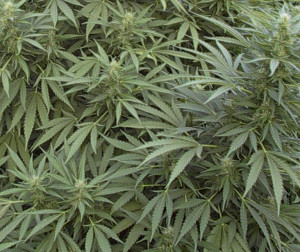
 A recent study from the California Department of Fish and Wildlife has the Media pinning the drought on cannabis cultivation, but does the math add up?
A recent study from the California Department of Fish and Wildlife has the Media pinning the drought on cannabis cultivation, but does the math add up?
Jason Browne of Full Circle Cannabis Consultations has a few talking points regarding water usage for cannabis cultivation.
 I would like for us all to put an entirely different spin on this issue of water usage and cannabis cultivation, as posited in a new study from the California Department of Fish and Wildlife. Fortunately, an article in the most recent issue of High Times has done a lot of the work for us. They have some great comparisons of the water usage of different plants, including cannabis, which, not surprisingly, uses far less water than most other crops. Now we can take their information, and apply our own economic comparisons. We know how much water it takes to produce a pound of almonds, alfalfa, plums, rice, etc. — and how much to produce a pound of cannabis — now let’s compare the value of a pound of cannabis, compared to each of the other crops, and then relate that back to our water usage. They opened Pandora’s box, and we should take advantage of the Truth of the matter. The truth is that cannabis produces far greater wealth, jobs and potential tax revenues, per gallon of water used, than any other agricultural commodity in California. Let’s get that on the front pages!
I would like for us all to put an entirely different spin on this issue of water usage and cannabis cultivation, as posited in a new study from the California Department of Fish and Wildlife. Fortunately, an article in the most recent issue of High Times has done a lot of the work for us. They have some great comparisons of the water usage of different plants, including cannabis, which, not surprisingly, uses far less water than most other crops. Now we can take their information, and apply our own economic comparisons. We know how much water it takes to produce a pound of almonds, alfalfa, plums, rice, etc. — and how much to produce a pound of cannabis — now let’s compare the value of a pound of cannabis, compared to each of the other crops, and then relate that back to our water usage. They opened Pandora’s box, and we should take advantage of the Truth of the matter. The truth is that cannabis produces far greater wealth, jobs and potential tax revenues, per gallon of water used, than any other agricultural commodity in California. Let’s get that on the front pages!
These are the talking points I think we should work on, and back them up with data and links:
1) All “marijuana” plants being cultivated on public property, whether by foreign drug cartels or by American citizens, are unlawful and have no place in any conversation about regulated cannabis cultivation. Such operations are beyond the scope of any regulations, they are under the exclusive purview of law enforcement and they will continue to be eradicated every year, regardless of medical and recreational cannabis laws. Adding additional penalties against persons whose only incentive to cultivate “marijuana” is for financial gain, will not deter such illegal cultivation. However, applying those harsh penalties against qualified individuals for growing their own medicine, in accordance with state laws, and then intentionally misrepresenting that legal patient gardens and illegal marijuana operations are the same thing, is unconscionable.
2) Cannabis cultivation is legal in California, when done in accordance with the C.U.A. and M.M.P.A. If we are truly having a discussion about water conservation and usage during times of drought, then we insist that cannabis plants be afforded the same scrutiny as other legal uses of water. If a municipality or agency wants to restrict water usage, it properly does so according to land zoning categories and other factors such as restricting days and times of water use. This attempt to indirectly circumvent the rights of patients to cultivate their own medical cannabis has been an ongoing problem for 18 years in California, and blaming cannabis cultivation for the drought is a new low for the advocates of reefer madness.
3) Our property rights in California (and all western states) actually begin with water rights. When water was appropriated for agricultural purposes, it formed the basis of title or rights to other land uses in California. So property owners either have vested rights to use water, or they lease those rights out, to the government, or legal tenants. Water use laws in the western states are very complex, and are not something that cannabis prohibitionists can really hope to change, just because they don’t like people growing the herb. Notwithstanding all this bantering by certain regulatory agencies, if they attempt to deprive landowners of legitimate water rights, based merely on the presence of cannabis plants, they will open up yet another Pandora’s box… and they will ultimately lose that argument in court.
4) The United States Supreme Court has, on more than one occasion, ruled that all cannabis cultivation and distribution are matters of Interstate Commerce (OCBC, Raich, Rosenthal), and as such, all medical cannabis production in California must be considered to be “Agriculture”, as that term applies to California Zoning Codes. The main reason that cities and counties are getting away with their abatement schemes, is precisely because they are claiming (with straight faces) that “cannabis is not agriculture, because it cannot be grown commercially.” If the Supreme Court of the United States says that all cannabis cultivation is a form of commerce, in order for the Federal Government to even claim jurisdiction on this subject within the States, then it most certainly can be grown commercially, and local governments should not be allowed to continue enforcing local bans and nuisance abatement schemes under color of law. The personal cultivation of cannabis, and the commercial cultivation of cannabis, are properly regulated according to long-standing land use laws, under local zoning categories. The commercial cultivation of cannabis, if undertaken on any agriculturally or industrially zoned parcels, is exempt from common nuisance abatement, under existing California Zoning Codes (people living in or near those zones, and even local municipalities, have no legal right to seek an abatement or to file a nuisance complaint against persons, specifically for engaging in activities that are allowed in those zones). And residential properties already allow for the personal cultivation of various kinds of plants, including food crops, in accordance with California Zoning Codes.
I hope this proves useful. I’m already on this bandwagon. Check out the High Times article, and if you like this idea, please share this information on your social media accounts.
Jason Browne
Full Circle Cannabis Consultations
http://fullcirclecannabis.com



Be the first to comment